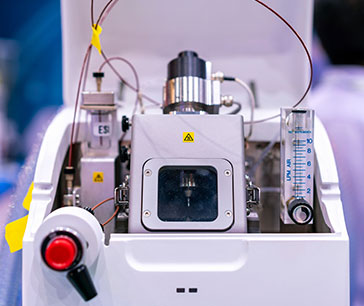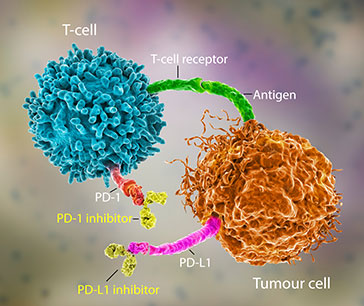Table Of Contents

Roshan Deshmukh

Pooja Parvatkar
A Glance Through the Top 10 Life Sciences Markets of Q4 2023

In 2023, the life sciences industry witnessed innovation, embracing advanced technologies like gene editing and artificial intelligence for drug discovery. Global health preparedness became paramount, emphasizing vaccine development and regulatory agility. Data integration and analytics optimized research and development, while a patient-centric approach influenced strategies, enhancing overall healthcare outcomes. Allied Market research provides insights on the top 10 markets that gained prominence in the fourth quarter of 2023, exploring their growth drivers and future prospects.
CAR T-Cell Therapy
The growth of the CAR T-cell therapy market is driven by increase in investment for research and development of the new CAR T-cell therapy, increase in prevalence of leukemia across the globe, and high effectivity of CAR T-cell therapy over other conventional drugs for cancer treatment. According to the Leukemia Research Foundation, an estimate of 6,660 new cases of acute lymphoblastic leukemia were diagnosed in 2022. This rise in cases of leukemia has propelled the demand for CAR T-cell therapy, which drives the market growth. The CAR T-cell therapy market size was valued at $2.6 billion in 2022 and is estimated to reach $35.9 billion by 2032, exhibiting a CAGR of 28.5% from 2023 to 2032.
3D Bioprinting in Medical
The growth of the 3D bioprinting in medical market is driven by increase in prevalence of chronic diseases, rise in R&D investment, and advancements in 3D bioprinting technology. For instance, according to the report of National Association of Chronic Disease Directors 2022, nearly 60% of adult Americans have at least one chronic disease. The global 3D bioprinting in medical market was valued at $1.1 billion in 2022, and is projected to reach $4.9 billion by 2032, growing at a CAGR of 15.5% from 2023 to 2032.
Mass Spectrometry
The mass spectrometry market trends include increase in pharmaceutical and biotechnology research, advancement in mass spectrometry technology, and surge in government and private funding. Technological advancement in mass spectrometry techniques is a major driver for the mass spectrometry market. Such advanced techniques allow MS analysis of all elements in complex samples and facilitate high resolution of components. Thus, adoption of technologically advanced mass spectrometers drives the market growth. Furthermore, increase in the funding for mass spectrometry research also drives the market growth. The global mass spectrometry market was valued at $6.9 billion in 2022, and is projected to reach $14.6 billion by 2032, growing at a CAGR of 7.7% from 2023 to 2032.

Flow Cytometry
The rise in technological advancement and the expanding application of flow cytometry in various fields such as immunology, hematology, oncology and stem cell research are the major factors that contribute to the growth of the market. In addition, the surge in demand for flow cytometry in clinical diagnostics and drug discovery and development propels the growth of the market. Furthermore, the increase in demand for personalized medicine and easy availability of automated and high throughput flow cytometry system for the handling of large-scale experiments efficiently are the major factors that boost the market growth. The global flow cytometry market size was valued at $6.2 billion in 2022, and is projected to reach $16.6 billion by 2032, growing at a CAGR of 10.3% from 2023 to 2032.
Teleradiology
The primary driver propelling the teleradiology market growth is the increasing geriatric population and the prevalence of target diseases, including cardiovascular conditions, cancer, and osteoarthritis (OA). As the elderly population grows, so does the incidence of diseases that require medical imaging for accurate diagnosis and treatment planning. Cardiovascular diseases and cancer, prevalent among the aging demographic, necessitate thorough radiological assessments. High Prevalence of osteoarthritis, a common musculoskeletal ailment affecting predominantly older individuals, further accentuates the demand for medical imaging. Notably, the Osteoarthritis Action Alliance reports that 43% of people with OA are 65 years or older, with 88% being 45 or older. The rise in these demographic-specific health conditions underscores the crucial role of teleradiology industry in providing efficient interpretation and analysis of diagnostic data, supporting timely interventions and enhancing the overall quality of healthcare for the aging population. The teleradiology market was valued for $8.8 billion in 2022 and is estimated to reach $46.7 billion by 2032, exhibiting a CAGR of 18.1% from 2023 to 2032.
Immune Checkpoint Inhibitors
The primary driver fueling the immune checkpoint inhibitor market is the rising global prevalence of cancer. Immune checkpoint inhibitors are employed in treating diverse cancer types such as lung cancer, melanoma, bladder cancer, colorectal cancer, renal cancer, and others. According to estimations by Globocan in 2020, around 19.2 million new cases of cancer were diagnosed in the world, and by 2030, it is projected that there will be 26 million new cancer cases across the world. This significant increase in cancer incidences underscores the anticipated surge in demand for immune checkpoint inhibitors, positioning them as vital contributors to the ongoing growth of the market. The global immune checkpoint inhibitors market was valued at $40.1 billion in 2022, and is projected to reach $189.4 billion by 2032, growing at a CAGR of 16.8% from 2023 to 2032.

Generative AI in Healthcare
The growth of generative artificial intelligence in the healthcare market is driven by a surge in the adoption of generative AI technology for medical image analysis, the use of generative AI for drug discovery and development processes. For instance, in January 2023, Absci Corporation, a generative AI drug creation company, announced that they had created and validated de novo antibodies in silico (via a computer) with the use of zero-shot generative AI. The global generative AI in healthcare market size was valued at $1.6 billion in 2022 and is projected to reach $30.4 billion by 2032, growing at a CAGR of 34.9% from 2023 to 2032.
Gastric Cancer Diagnostic
The growth of the gastric cancer diagnostic market is driven by a rise in incidences of gastric cancer around the globe and surge in demand for advanced gastric cancer diagnostic for the treatment of these infections. For instance, according to the American Cancer Society, stomach cancer accounted for about 1.5% of all new cancers diagnosed in the U.S. each year. In addition, according to the Centre for Health Protection, around 1,197 new cases of stomach cancer diagnosed in 2020, with 715 cases of males and 482 cases of female. The rise in incidence of gastric cancer has increased the demand for gastric cancer diagnostic tools which propels the market growth. The global gastric cancer diagnostic market size was valued at $2.3 billion in 2022, and is projected to reach $3.8 billion by 2032, growing at a CAGR of 5.3% from 2023 to 2032.
TAVR Embolic Protection
The growth of the TAVR embolic protection market size is significantly driven by the increasing prevalence of aortic stenosis and the surge in the geriatric population. Aortic stenosis (AS), a condition characterized by the narrowing of the aortic valve in the heart, has become more prevalent as the global population ages. For instance, according to the European Society of Cardiology report in 2020 the prevalence of AS was 12.4%, and the prevalence of severe AS in those aged 75 years and older was 3.4%. The global tavr embolic protection market size was valued at $108.8 million in 2022, and is projected to reach $405.4 million by 2032, growing at a CAGR of 14% from 2023 to 2032.
Tumor Ablation
The rise in prevalence of cancer and surge in adoption of tumor ablation devices by healthcare professionals are the major factors that propel the growth of the market. For instance, according to American Cancer Society, in 2022, 1,958,310 new cancer cases and 609,820 cancer deaths were noted in the U.S. Furthermore, according to a 2023 report by Cancer Research UK, the incidence rate of cancer has increased by 12% from early 1990s to 2023. The global tumor ablation market size was valued at $1.4 billion in 2022, and is projected to reach $5 billion by 2032, growing at a CAGR of 13.5% from 2022 to 2032.

The Bottom Line
The fourth quarter of 2023 brings forth a dynamic landscape in the life sciences industry, with these top 10 markets showcasing remarkable growth and innovation. The future of these markets will be shaped by continuous innovation, digital transformation, and sustainable practices. Smart technologies, data-driven decision-making, and global collaborations will drive growth and competitiveness. Explore the future of the life sciences industry - Contact AMR analysts for deeper insights and strategic guidance.

